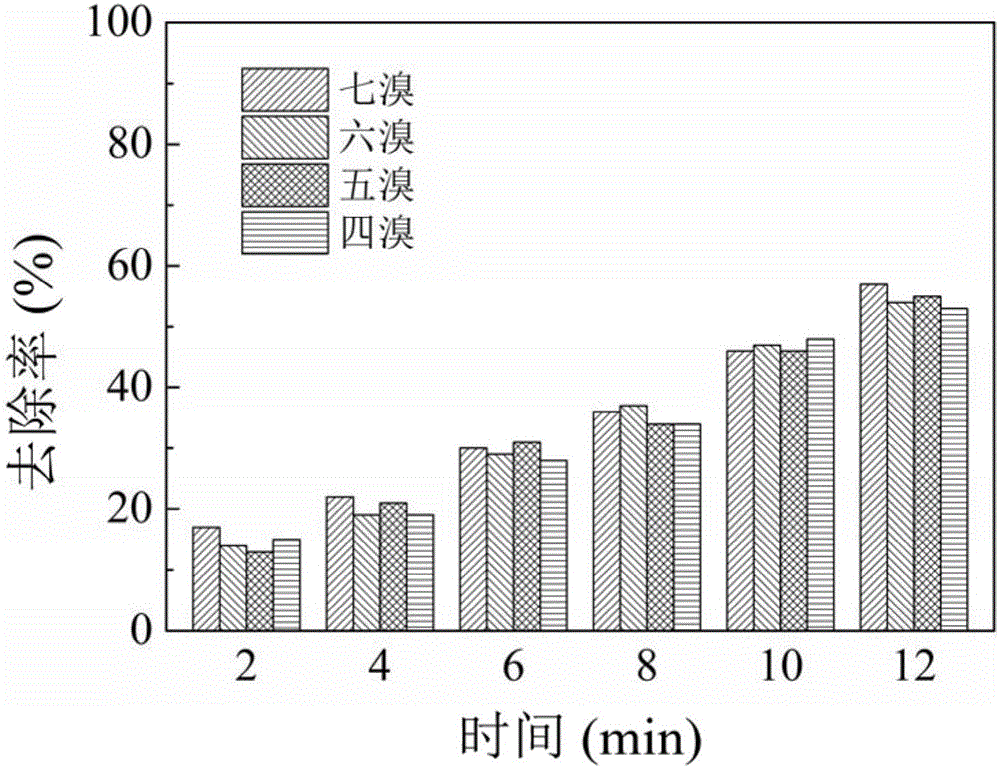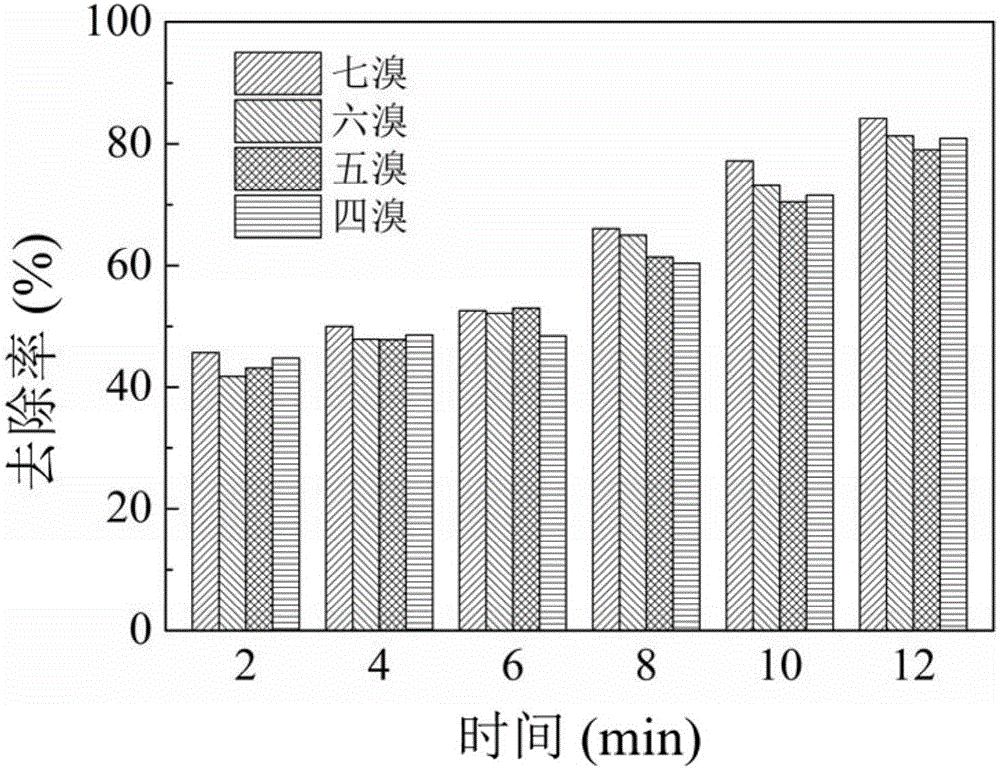Method for degrading tail gas generated by polybrominated-diphenyl-ether polluted soil restoration by thermal desorption technique
A polybrominated diphenyl ether and polluted soil technology is applied in the field of degrading the tail gas of the polybrominated diphenyl ether-contaminated soil repaired by thermal desorption technology, which can solve problems such as environmental pollution of the exhaust gas, and achieve the effects of efficient detection and rapid detection.
- Summary
- Abstract
- Description
- Claims
- Application Information
AI Technical Summary
Problems solved by technology
Method used
Image
Examples
Embodiment 1
[0020] The preparation of embodiment 1 structured carrier
[0021] The 1060 type aluminum plate (99.6wt%) was treated with 10wt% NaOH and 10wt% HNO 3 After treatment for 4min and 2min, place it in an electrolytic cell filled with 0.4mol / L oxalic acid solution at 20°C with a current density of 50A / m 2 The anodized aluminum plate was anodized for 12 hours under certain conditions, and the obtained anodized aluminum plate was fired at 350°C for 1 hour, and then treated in deionized water at 80°C for 60 minutes. Finally, it is calcined at 500°C for 4 hours to obtain γ-Al 2 o 3 / Al plate catalyst.
Embodiment 2
[0022] The preparation of embodiment 2 supported copper catalysts (competitive adsorption method)
[0023] Using water as a solvent, prepare a 0.5mol / L acetic acid solution, and mix γ-Al 2 o 3 / Al was immersed in this solution for 4 hours at 25°C under constant stirring; after natural drying for 6 hours, placed in 1.5mol / L copper nitrate solution at 25°C and constant stirring for 12 hours, after natural drying for 12 hours, Put it in a muffle furnace and raise the temperature to 500°C at a heating rate of 5°C / min, and keep it for 4 hours to obtain Cu / γ-Al with a Cu content of 10.0wt%. 2 o 3 / Al catalyst.
Embodiment 3
[0024] Embodiment 3 loaded copper-nickel catalyst (competitive adsorption method loading Cu, electrolytic method loading Ni)
[0025] Cu / γ-Al at 25°C 2 o 3 / Al placed in 1mol / L copper nitrate solution, at a current density of 50A / m 2 Conduct DC electrolysis under conditions for 3 minutes, and after natural drying for 12 hours, place the temperature in a muffle furnace to 500°C at a rate of 5°C / min and keep it for 4h to obtain Cu / Ni / γ with 2.5wt% Ni content -Al 2 o 3 / Al catalyst.
PUM
| Property | Measurement | Unit |
|---|---|---|
| Length | aaaaa | aaaaa |
Abstract
Description
Claims
Application Information
 Login to View More
Login to View More - R&D Engineer
- R&D Manager
- IP Professional
- Industry Leading Data Capabilities
- Powerful AI technology
- Patent DNA Extraction
Browse by: Latest US Patents, China's latest patents, Technical Efficacy Thesaurus, Application Domain, Technology Topic, Popular Technical Reports.
© 2024 PatSnap. All rights reserved.Legal|Privacy policy|Modern Slavery Act Transparency Statement|Sitemap|About US| Contact US: help@patsnap.com









